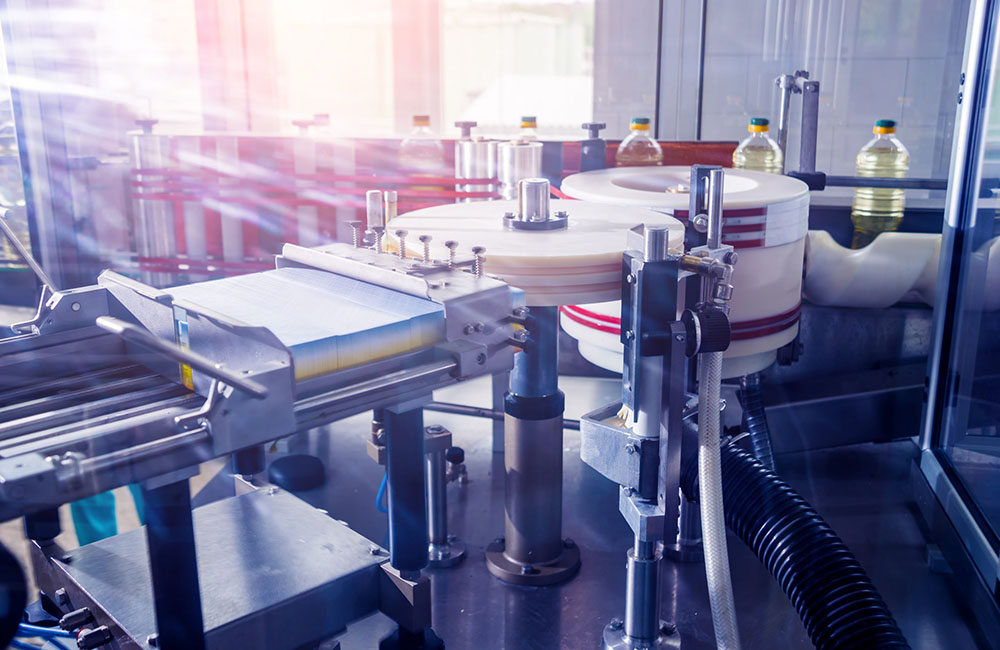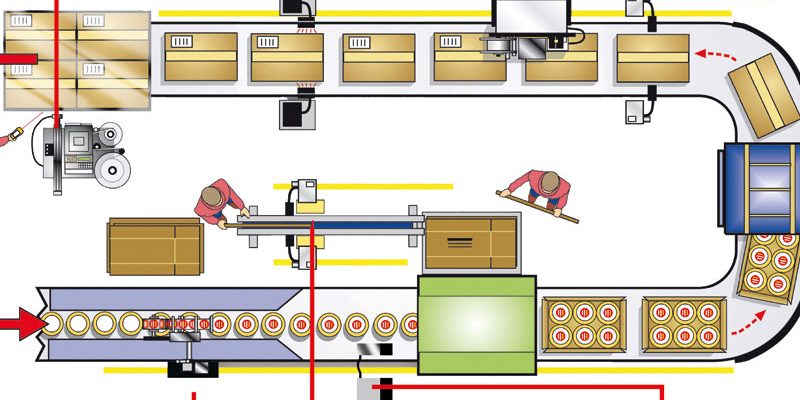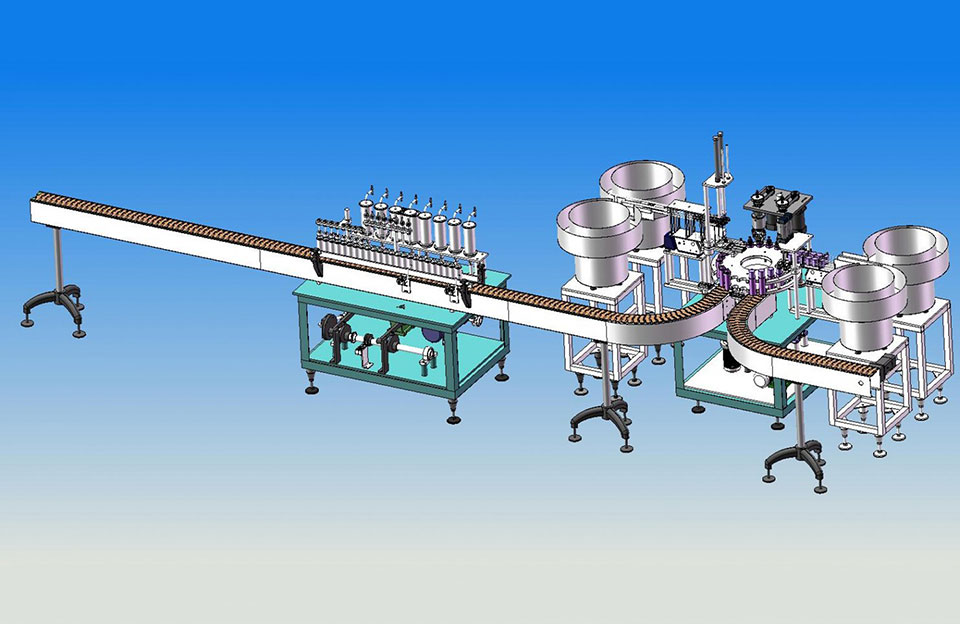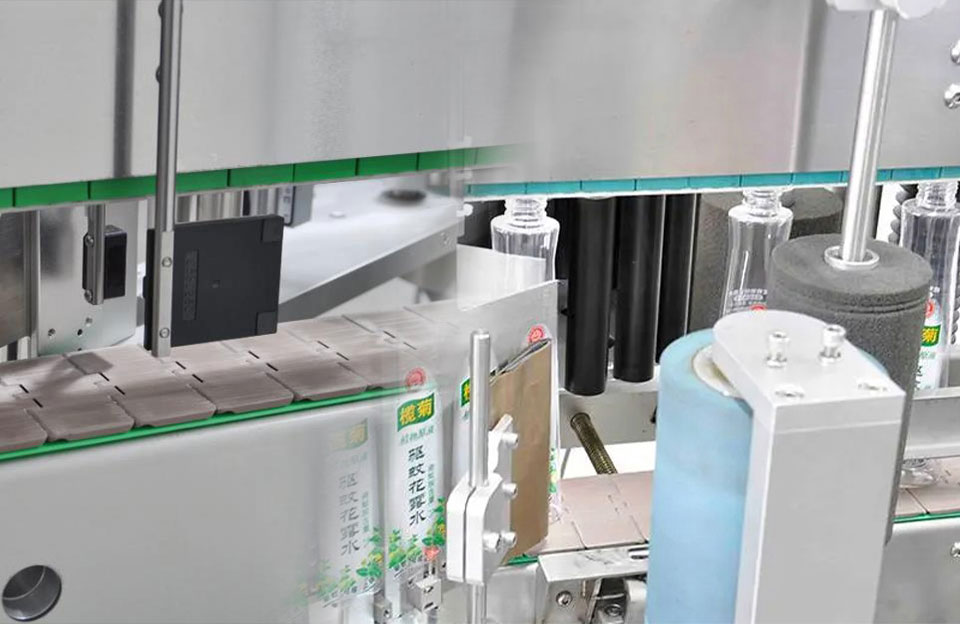Automated production lines and labeling machines play crucial roles in modern manufacturing and packaging processes. They offer numerous benefits that contribute to efficiency, accuracy, and overall productivity in various industries.
Features and Advantages of Automated Production Lines
Automated production lines offer a wide range of features and advantages that contribute to increased efficiency, higher productivity, improved quality, and overall cost savings in manufacturing processes. Here are some key features and advantages of automated production lines:
Features:
- Sequential Processing: Automated production lines consist of a series of workstations where each station performs a specific task in the manufacturing process. The product moves from one station to the next in a predetermined sequence.
- Integration of Machines: Different machines and equipment are seamlessly integrated into the production line, allowing for smooth material flow and consistent operations.
- Robotics and Automation: Robotic arms and automation technologies perform tasks that would otherwise require manual labor. These robots are programmed to handle tasks with precision and repeatability.
- Conveyor Systems: Conveyor belts or automated guided vehicles (AGVs) transport materials and products between workstations, ensuring a continuous flow of production.
- Sensor Technology: Sensors and vision systems are often integrated to monitor the production process, detect defects, and ensure proper product positioning.
- Computer Control: Automated production lines are controlled by computer systems, which oversee the entire process, coordinate tasks, and optimize efficiency.
- Data Collection: Automated lines collect real-time data on various production metrics, allowing for analysis, optimization, and decision-making based on accurate information.
Advantages:
- Increased Productivity: Automated production lines can operate at high speeds and around the clock, leading to significantly higher production rates compared to manual processes.
- Consistency and Quality: Automation ensures consistent product quality by reducing the chances of errors that can occur with manual labor. This results in higher customer satisfaction and reduced defect rates.
- Reduced Labor Costs: Automation reduces the need for extensive manual labor, leading to cost savings in terms of labor wages, benefits, and training expenses.
- Shorter Cycle Times: Automated processes are generally faster and more efficient, reducing the time required to manufacture products and bring them to market.
- Space Optimization: Automated production lines can be designed to maximize the use of available space, making efficient use of factory floor layouts.
- Flexibility: Advanced automation systems can be reprogrammed and reconfigured to accommodate changes in product design or manufacturing requirements, providing a level of flexibility.
- Safety Improvements: Dangerous tasks can be assigned to automated systems, reducing the risk of workplace accidents and injuries.
- Data-Driven Decision Making: The data collected from automated processes allows for data-driven decision-making, enabling continuous process improvement and optimization.
- Traceability and Compliance: Automated systems provide accurate record-keeping, aiding in traceability for quality control and regulatory compliance purposes.
- Reduced Waste: Automation can help minimize material waste and optimize resource usage, contributing to cost savings and environmental sustainability.
- Competitive Advantage: Implementing automated production lines can lead to improved competitiveness in the market due to enhanced efficiency and product quality.
The Role of Labeling Machines In Automated Production Lines
Labeling machines play a crucial role in automated production lines by providing accurate, consistent, and efficient labeling of products, packages, and containers. They contribute to various aspects of the production process, enhancing product identification, regulatory compliance, brand recognition, and overall operational efficiency. Here’s an overview of the key roles and benefits of labeling machines in automated production lines:
- Accurate Label Application: Labeling machines ensure precise and consistent placement of labels on products, eliminating the variability and potential errors associated with manual labeling. This accuracy is essential for maintaining product quality and aesthetics.
- Regulatory Compliance: In many industries, products must include specific information such as ingredient lists, nutritional facts, usage instructions, safety warnings, and barcodes to comply with regulations. Labeling machines can automatically apply these required labels, reducing the risk of regulatory non-compliance.
- Branding and Marketing: Labels are a vital part of a product’s branding and marketing strategy. Labeling machines ensure that labels are applied neatly and aligned correctly, enhancing the visual appeal of products on the shelves and conveying a professional brand image.
- Increased Throughput: Labeling machines can operate at high speeds, keeping up with the pace of automated production lines. This helps maintain consistent production rates and prevents bottlenecks in the overall manufacturing process.
- Reduced Labor Intensity: Automated labeling eliminates the need for manual label application, reducing labor requirements and associated costs. This allows human workers to focus on more skilled tasks that require their expertise.
- Consistency and Quality: Labeling machines ensure that labels are applied with uniform pressure and alignment. This consistency contributes to the overall quality of products, reducing the chances of misapplied or wrinkled labels.
- Versatility in Label Types: Labeling machines can handle various label types, such as adhesive labels, shrink sleeves, tamper-evident seals, and more. This versatility makes them suitable for a wide range of packaging requirements.
- Real-Time Data Integration: Labeling machines can be integrated with other systems in the automated production line, such as barcode scanners and product tracking software. This integration allows for real-time data exchange and accurate labeling based on product-specific information.
- Waste Reduction: Automated labeling reduces the likelihood of label wastage due to misalignment or incorrect application, contributing to cost savings and a more sustainable production process.
- Adaptability to Product Changes: Labeling machines can be easily reconfigured to accommodate changes in product sizes, shapes, or labeling requirements. This adaptability is essential for accommodating product variations within the same production line.
- Traceability and Quality Control: Labels can include unique identifiers like barcodes or QR codes, enabling efficient traceability throughout the supply chain. Automated labeling supports quality control efforts by ensuring that each product is properly labeled with relevant information.
- Workflow Integration: Labeling machines can be seamlessly integrated into the overall automated production process, aligning with other machinery, conveyors, and inspection systems to create a streamlined and cohesive workflow.

Labeling Machines
How to Seamlessly Integrate Labeling Machines Into Automated Production Lines
Seamlessly integrating labeling machines into automated production lines requires careful planning, coordination, and consideration of various factors. Here’s a step-by-step guide to achieve a successful integration:
- Define Integration Goals: Clearly define the integration goals. Determine what you aim to achieve by adding labeling machines to your production line, such as increased efficiency, accurate labeling, regulatory compliance, or improved product traceability.
- Choose the Right Labeling Machine: Select a labeling machine that aligns with the production line’s requirements. Consider factors like labeling speed, label types (adhesive, shrink sleeve, etc.), label sizes, and compatibility with your existing equipment.
- Design Layout and Workflow: Design the layout of your automated production line with the labeling machine in mind. Ensure that there’s adequate space for the machine, conveyor belts, and other components. Plan the workflow to ensure smooth material flow.
- Integration Planning: Develop a detailed integration plan that outlines the steps required for the successful installation of the labeling machine. Identify potential challenges and solutions, considering electrical, mechanical, and software aspects.
- Mechanical Integration: Physically integrate the labeling machine into the production line. Ensure that it’s properly aligned with other machines, conveyors, and workstations. Make sure the conveyor heights match for smooth product transfer.
- Electrical and Controls Integration: Connect the labeling machine to your production line’s control system. Ensure that the labeling machine’s electrical requirements are compatible with your existing setup. Integrate sensors, actuators, and communication protocols for seamless coordination.
- Software Integration: Integrate the labeling machine’s software with your overall production line control system. This might involve programming PLCs (Programmable Logic Controllers), HMI (Human-Machine Interface), and other automation software.
- Communication Protocols: Ensure that the labeling machine can communicate with other machines and systems on the production line. Implement common communication protocols such as Modbus, Ethernet/IP, or OPC UA for data exchange.
- Testing and Calibration: Thoroughly test the integration by running sample products through the production line. Verify that labels are applied accurately and consistently. Calibrate sensors, actuators, and any vision systems for optimal performance.
- Training: Train the operators and maintenance staff on how to operate, maintain, and troubleshoot the integrated labeling machine. Provide them with documentation and resources for reference.
- Quality Control and Validation: Implement quality control measures to ensure that the labeling process meets the desired standards. Validate the labeling machine’s performance through continuous monitoring and periodic inspections.
- Continuous Improvement: Gather feedback from operators and monitor the machine’s performance. Make necessary adjustments and improvements to optimize efficiency and accuracy over time.
- Scalability and Flexibility: Design the integration with scalability and flexibility in mind. Ensure that the system can accommodate changes in production volume, new products, and evolving industry requirements.
- Documentation: Maintain thorough documentation of the integration process, including wiring diagrams, software configurations, calibration settings, and troubleshooting procedures.

Labeling Machines Into Automated Production Lines
Conclusion
Automated production lines and labeling machines contribute significantly to efficient, consistent, and high-quality manufacturing processes. They reduce costs, improve safety, and enhance the overall competitiveness of businesses in a variety of industries.


